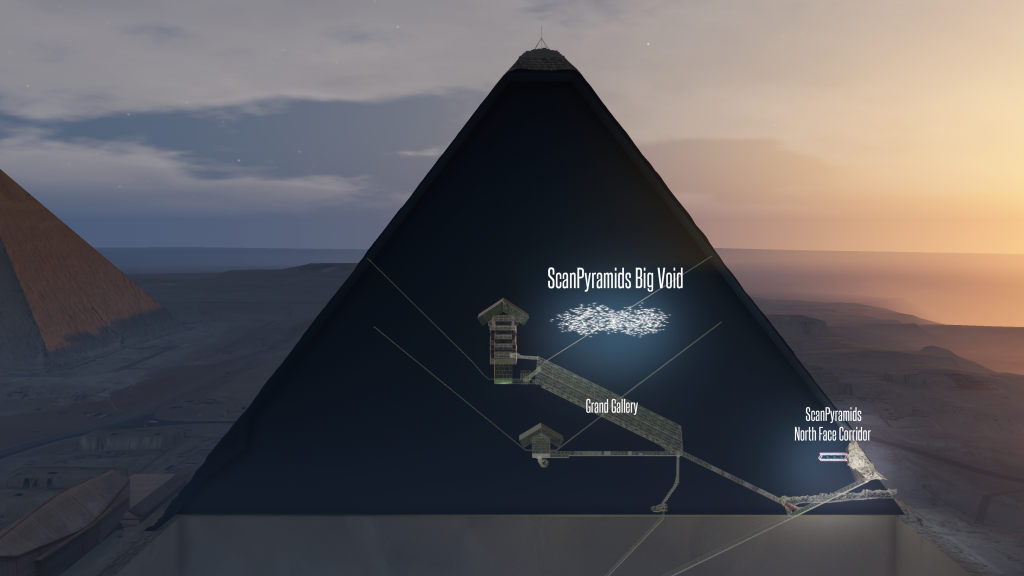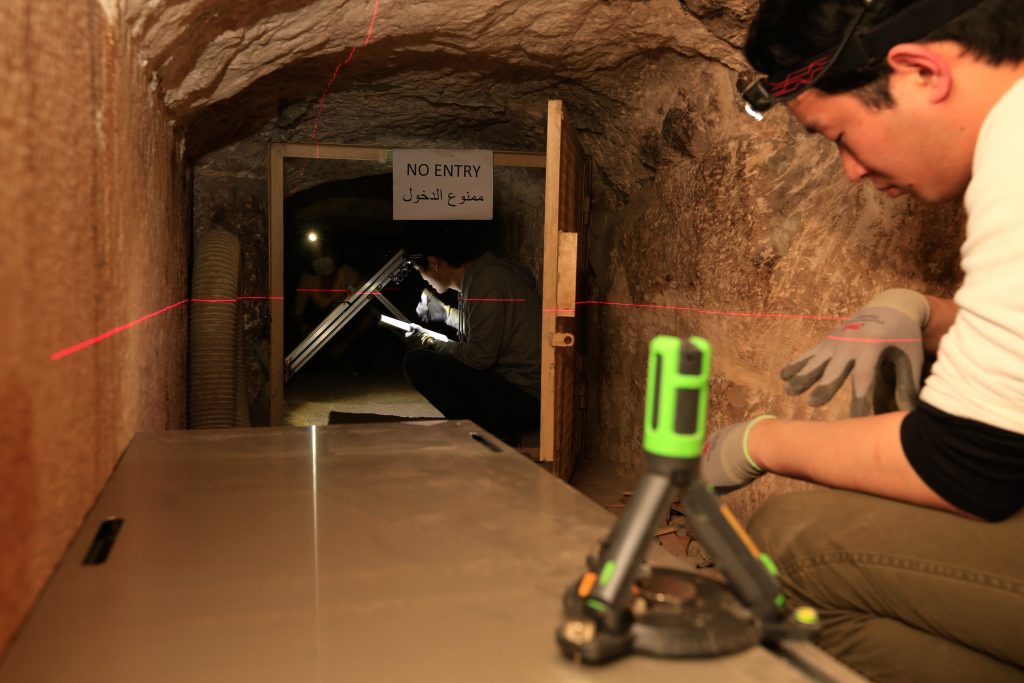There’s a Huge Secret Vault in Giza’s Great Pyramid, and Nobody Knows Why
Credit to Author: Becky Ferreira| Date: Thu, 02 Nov 2017 12:00:00 +0000
A large previously unknown void has been detected within the Great Pyramid of Giza, according to a bombshell study released Thursday in Nature. The find marks the first time in over a century that any major structure has been discovered within this mother of all heritage sites, and indicates that the Great Pyramid, also known as Khufu’s pyramid, has a chamber, or series of chambers, that has likely remained hidden since the pyramid’s construction 4,500 years ago.
Led by Mehdi Tayoubi, president of the French nonprofit Heritage Innovation Preservation (HIP) Institute, and Kunihiro Morishima, a physicist and professor at Nagoya University, the study’s authors were able to detect this secret vault with a non-invasive method called muon tomography. While it doesn’t sound sexy, it harnesses the power of light from distant stars and galaxies to probe delicate structures on Earth, so that’s an undeniable plus.
“From a scientific point of view, we are confident the void exists,” said study co-author Hany Helal, a professor of engineering at Cairo University, during a Nature press briefing on Wednesday. “What does it mean? Why is it there? What is the purpose of this void? We have to have international discussions with specialists of Egyptology, in order to know.”

During the 19th century, Egyptologists physically tunneled into the Great Pyramid to explore its three largest known cavities: the King’s Chamber, which was a tomb, the Queen’s Chamber, the purpose of which is debated, and the Grand Gallery corridor that connects these two spaces. Located about 40 to 50 meters above the Queen’s chamber, this newly detected fourth cavity exhibits a similar scale to the Grand Gallery, and measures about 30 meters across.
The room has only been probed indirectly, with the help of cosmic ray muons. These energetic elementary particles are created when light from beyond our solar system—emitted by exploding stars, radiant nebulas, and neighboring galaxies—crashes against Earth’s atmosphere. These particles then shower down to the planet’s surface and pass through its structures, including the Great Pyramid.
“If you have a muon detector behind or below an object that you want to probe, you are just counting the amount of muons that are coming from a given direction,” explained co-author Sébastien Procureur, a physicist at the French Alternative Energies and Atomic Energy Commission (CEA). “This quantity of muons, the muon flux, gives you an indication of the average density of matter in that direction.”

By setting up three different varieties of muon detector in the Queen’s chamber, the team was able to trace out the rough contours of the hidden void above the instruments, and confirm its existence multiple times. The void also showed up when the team placed detectors outside the pyramid, resulting in a high degree of confidence about its existence.
I have bad news for anyone eager to see what’s locked away in this void, and good news for those who think secret Egyptian pyramid chambers should be left untouched: There are no plans, at this point, to intrusively burrow into the mysterious chamber. While it was once common for archeologists to tunnel into research sites, excavations at the historic Giza buildings are now strictly regulated to preserve their historical and structural integrity.
“I think this void [has been] hidden since the construction of the pyramid,” Tayoubi said. “It is not accessible. We needed to have this new technique, the right technique at the right time, to be able to identify and discover it.”
The tantalizing research is the fruit of the international collective ScanPyramids, launched on October 25, 2015, by the Faculty of Engineering of Cairo and the HIP Institute. In the wake of studies that used advanced muon detectors to map out sensitive areas, from the Fukushima nuclear meltdown site to active volcanoes, the ScanPyramids team sought to adapt this technology to probe the mysteries of Egypt’s iconic monuments.
Read More: Scientists Blast Pyramids of Giza With Subatomic Particles to Reveal Its Secrets
Still, they were “very surprised,” Tayoubi said, to find such a large empty space above the Queen’s chamber.
“We are really excited for more attention on this project, and more researchers who want to join and help,” he added. “I think that in each engineer and scientist, there is a kid, and all of those kids have dreams about pyramids.”

Given that the pyramid has a reputation for inspiring conspiracy theories, ranging from Ben Carson’s hypothesis that it was built for grain storage to the idea that its builders got an assist from aliens, it’s gratifying that this sensational discovery requires no tinfoil hats, just cosmic ray muons. It may fall a bit short of ancient aliens, but we can at least celebrate the fact that light from alien sources uncovered exciting new features inside the Great Pyramid.
Get six of our favorite Motherboard stories every day by signing up for our newsletter .